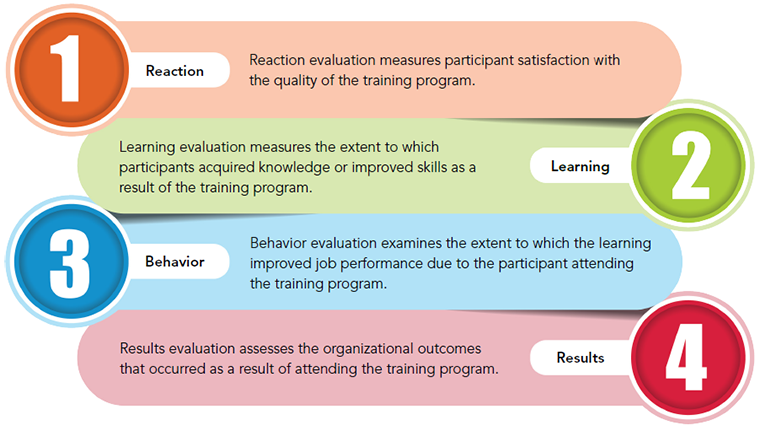1.0 Performance Relative to Stated Mission & Goals
1.6 Program Development
PDP’s program development continues to be based on using the best practices of adult learning theory for the development of training and its accompanying program evaluation. Administratively, PDP’s programs are fiscally responsible, adhering to all federal, state, University, and Research Foundation guidelines, policies, and regulations.
1.6.1 Curriculum Design
PDP grounds curriculum design and development and related training support by successfully combining the best of traditional and current adult learning theories with the most progressive competency- and performance-based, skill-focused application methods, often enhanced by appropriate educational technologies including web-based approaches. Standardized curricula templates and information mapping strategies, as well as peer mentoring, experiential learning, demonstration and practice, cooperative group process, job task analyses, the latest presentation technologies, various distance learning strategies, and independent/individualized learning plans are commonly used
at PDP.
 Information Systems Assistant Connor Hing and Senior Programmer/Analyst Yehui Liu at the PDP Staff Recognition Event.
Information Systems Assistant Connor Hing and Senior Programmer/Analyst Yehui Liu at the PDP Staff Recognition Event.
Drawing on the expertise of staff with knowledge and work experience as curriculum developers, program specialists, evaluation specialists, and computer programming experts, PDP develops and implements training programs in formats that match organizational goals and objectives with participants’ needs, schedules, and diverse learning styles. PDP’s affiliation with other higher education institutions and training organizations within and outside the state’s university system provides a rich resource of knowledge and research from many notable academics and professions to ensure training content reflects the latest literature and best practice wisdom available. PDP often customizes products to the specific needs of the sponsor. As noted earlier, PDP has been recognized as a leader in curriculum development and training by the Association for Talent Development (ATD), receiving their award for innovative curriculum design, and adapting emerging instructional technologies to refine and expand traditional training approaches.
PDP incorporates a performance-based (competency-based) training model in many of its programs. This training model is geared toward addressing organizational outcomes and the core competencies of workplace staff to best meet the overall learning goals of the program.
Once organizational outcomes, core competencies, desired training outcomes, and tasks to be performed to achieve outcomes are identified, the knowledge, skills, and aptitudes enabling the consistent performance of tasks are determined and integrated into the training curricula design.
Training is structured to provide a knowledge base, build necessary skills for job performance, and reinforce attitudes and beliefs that enhance performance and service delivery. This allows participants to perform in ways that approximate and progressively approach the way they will perform on the job. Competency is then achieved in the workplace as the worker transfers newly learned skills to their job and receives constructive, timely feedback from their supervisor and others designated to coach
and train.
1.6.2 Evaluation
Training evaluation is conducted to determine the effectiveness of the training programs, both in-person and web-based, and to identify training areas in need of improvement. The overall design that is used to evaluate programs is based on Donald Kirkpatrick’s four-level model of training evaluation.1
According to Kirkpatrick’s model, training can be evaluated at four different levels: (1) reaction, (2) learning, (3) behavior, and (4) results. The four levels of evaluation are sequential. While the evaluation of a training program may include one or more of these levels, no level should be bypassed in order to reach a higher level—although exceptions must sometimes be made. All program evaluations in 2023–2024 followed this approach.
Level 1—Reaction
Reaction evaluation measures participant satisfaction with the quality of the training program.
Level 2—Learning
Learning evaluation measures the extent to which participants acquired knowledge or improved skills as a result of the training program.
Level 3—Behavior
Behavior evaluation examines the extent to which the learning improved job performance due to the participant attending the training program.
Level 4—Results
Results evaluation assesses the organizational outcomes that occurred as a result of attending the training program.

1 Kirkpatrick, Donald L. 1994. Evaluating Training Programs: The Four Levels. San Francisco: Berrett-Koehler Publishers.
1.6.3 Fiscal Responsibility
The Research Foundation for SUNY has fiscal responsibility for all sponsored activity of the State University of New York. The Research Foundation is a private, non-profit educational corporation chartered in 1951 by the State Board of Regents.
The Research Foundation carries out its functions in a manner consistent with policies and practices of the University at Albany, State University of New York. PDP abides by all federal, state, Research Foundation, and University policies and regulations that govern its activities.
